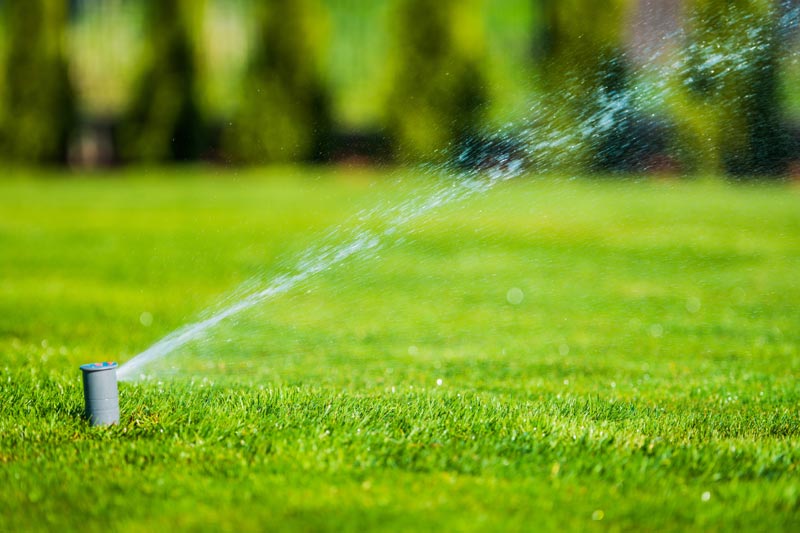On August 21st, 2017, there was a total eclipse, best viewed in the central USA. You wouldn’t want to be in that sort of darkness for long. The sun is the best friend of your garden and lawn, and regular watering with added sunshine keeps plants and turf healthy. There is an art to watering as well. Keep the root system from growing to the surface by deep watering at least once a week. Give your turf 25mm of water each week in a mild climate and do that once every three days in a hot climate. You’re in Western Australia – water restrictions apply.
The tip: place a container that is 25mm deep in the middle of your lawn, and when it’s full, stop watering. If you have a controlled sprinkler system, then program the controller as required. Your soil plays a big part in the program as well. Soil that can absorb and store water is ideal.
Fertiliser
Fertilising your lawn and gardens is essential to make sure that the plants and grass are getting the nutrients they need for healthy growth. Potassium, phosphorus and nitrogen, are the elements required. On the side of a bag of fertiliser you will see NPK, these are the elements with N for nitrogen, P for phosphorus and the K is potassium.
- Nitrogen – helps regulate other elements and assists green, healthy growth
- Phosphorus – assists with root development make plants disease resistant
- Potassium – a bit like phosphorus and helps root development
The instructions on the fertiliser bag will usually give you instructions on the best application method and the quantities. Optimum nutrient intake for the plants and minimum wastage with fertiliser entering the ground or contaminating water resources.
Soil
The best type of soil is the sandy loam which is made up of sand, silt and clay. If you have no idea of your soil condition, you can take a sample and bring it along to a soil testing laboratory or even the gardening centre where you shop might have a soil test facility as well. It certainly helps to know exactly what nutrients your soil might require, as that helps you buy the right fertiliser. As a benchmark, you should choose a fertiliser that has at least a quarter of the nitrogen in the form of sulphur-coated urea, allowing for slow release.
Pesticides
There is enough info on the internet, (and if in doubt Google it), but for the health of the environment as well as your plants and lawn don’t go buying pesticides from the local hardware store to control pesky insects. Pesticides get into groundwater and they kill ALL insects, even the good ones. there are a lot of natural alternatives that can be made up at home and used to control insects. It will save you a few dollars as well. Try a soap that contains no detergent and is branded as insecticidal, some garlic, and pepper spray. Did you know a small amount of liquid soap in about 4 litres of water can be used to spray plants and dislodge insects? There are even plants that are insect repellents, (natural defence systems), and can be used to help you maintain your lawns and gardens. Plant these in between your vegetables and flowers to help keep insects away.
